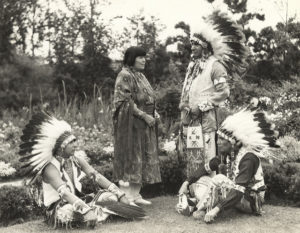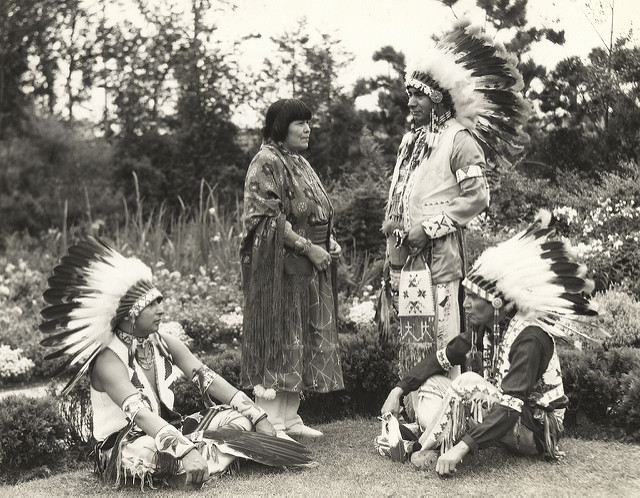 By Juanita Wilson, Eastern Band of the Cherokee Indians
By Juanita Wilson, Eastern Band of the Cherokee Indians
“Happy Thanksgiving!” Every year, on and around the fourth Thursday of November, the signs come out, beckoning us to the table of plenty. The term, “thanksgiving,” conjures up images of a beautifully roasted turkey on a big platter, surrounded by lots of delicious side dishes. The day was seen as a time to gather, cook and feast. Leading up to the feasting day, I remember being taught in school how wonderful it was that the white people who landed in the “New World,” befriended the Indians who met them on the shores. This was depicted in film and books. How happy everyone was! Caught up in the holiday rhetoric, I excitedly made paper turkeys by drawing the outline of my hand on a piece of construction paper, then cutting it out and coloring it to resemble the bird of honor. I didn’t realize it then, but I was seeing Thanksgiving through the lens of white America.
Let’s be clear: this is not a diatribe against white people. It is not about race. It is about why we celebrate Thanksgiving, or any other form of symbolism. Yes, in the beginning, solidarity existed between the Europeans and the native peoples they encountered, but it was a relationship forged from dependence on the knowledge of sustainability the native peoples possessed. Eventually, more and more Europeans learned to thrive on their own and became aware of the abundance of land and other natural resources around them. They began to desire possession of these things. What resulted was the devastation of cultural lifeways and attempts of genocide of native nations. There isn’t one native tribe in the United States that didn’t suffer great loss due to the zeal of the white immigrants.
Our story didn’t end there. In Indian Country, revolutions rise with deliberate stealth. Nations are taking back their power, using the, “Indian Self-Determination Act (1975),” which allows for Indian tribes to have greater autonomy over programs and services administered by the Federal Government; and the, “Indian Gaming Regulatory Act (1988),” which meant Tribes could create and operate full-scale casino gambling on their lands, with provisions, of course. Over 240 federally-recognized Indian tribes own and operate casinos. Crafty investments into economic ventures, education, environment, and culture have brought about a renewed pride in native lifeways. We see young adults moving back to reservations, adult employment increasing and decline in the number of working poor. The effect is not limited to tribal lands. In counties with or near a casino, the employment- to- population ratio has increased and mortality has declined.” Gaming is not without its cons, but the pride in having a say-so of one’s own destiny is immeasurable.
I now reflect back to that, “table of plenty,” from my own childhood. Our stomachs were full, but our spiritual selves were still famished, and we didn’t even know it. Now we do. We are changing the narrative.
Sources:
https://www.nytimes.com/2017/11/21/us/thanksgiving-myths-fact-check.html
https://www.nber.org/digest/feb03/w9198.html
https://www.bia.gov/regional-offices/pacific/division-indian-self-determination
https://www.500nations.com/Indian_Casinos_Tribes.asp

There are no comments
Add yours